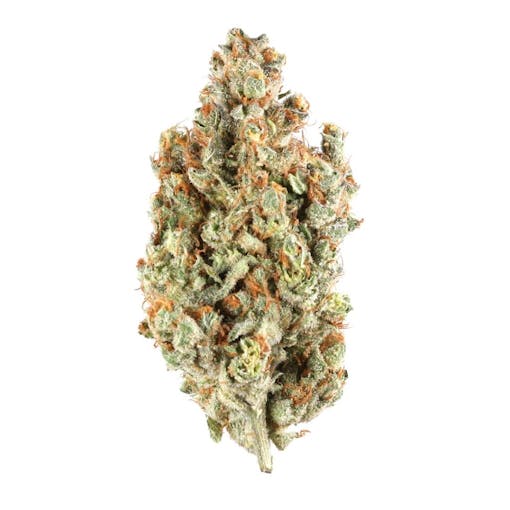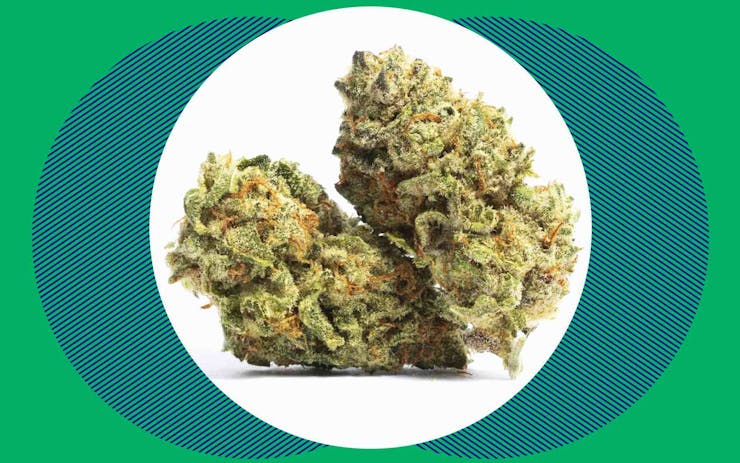Fruity, cake-y, sweet-smelling and tasting products dominate the list of winning weed today. And what’s not to love? Exciting, candy-like flavors have a universal appeal in the cannabis marketplace, delighting connoisseurs and newcomers alike.
Despite this trend, a completely different group of strains may be making a comeback: skunks, a legacy family with a stink akin to its animal namesake, and they couldn’t be any more different.
In its 1990s heyday, skunk weed dominated the illicit market. Co-owner of Washington-based Wildwood Flower Farm, Melissa Beseda, speculates that the easy grow and fast harvest of skunk cannabis made it ideal for growing indoors under prohibition, which could partially explain why it was everywhere.
“It’s a bit easier to contain, tends to be a fast-growing strain and a quick harvest,” she said. Over in the UK, this weed became so widespread the term “skunk” became synonymous with any potent cannabis strain, and still is today.
And as skunks crept into the ‘90s Canadian market, grower Dustan McLean said he remembers when they entered the Alberta scene: “The product here was pretty tame, then the skunks came along and you could smell them miles away. They stank!”
Could there be a wellspring of seekers for skunk in this cannabis era of ice creams and desserts?
Beseda says she’s seeing it happen already. “There’s been more interest in our skunk strain this year than there’s ever been before,” she said. “Until recently, the orders would come in for everything but skunk. But now, skunk is moving a lot faster.”
Grandpa’s good ol’ stinky weed
The skunk family started with Skunk #1, a cultivar developed in late 1970s from a uniquely diverse mix of Afghani, Acapulco Gold, and Columbian Gold. When its Californian cultivator, David Watson, brought his seeds to the Netherlands in the 1980s, they dramatically shaped the Dutch cannabis scene and ultimately influenced ‘90s and ‘00s underground markets in Europe and North America. Seed bank giant Sensi Seeds retains a trademark on Skunk #1 and has been selling this iconic strain since its earliest days.
That signature skunky smell is mostly thanks to myrcene, its dominant terpene. Described as a green musky odor, myrcene is also present in thyme, hops, and lemongrass. The myrcene in skunk weed may be reminiscent of compounds called thiols, found in the actual animal skunk, which are sulfur-based aromatics that give off an unmistakable, hang-in-the-air stink. Any rational person might wonder what the appeal of skunk weed is—until they try it.

Leafly reviewers give Skunk #1 top marks for a happy, euphoric, and relaxing high, and skunks are notorious as couch lockers, but not because they contain skyrocket levels of THC—the secret sauce of skunk lies in its terpenes.
“Skunk is heavy in myrcene which we know will knock you out. When you open that bag and it hits you, you might think it’s potent in THC,
Orange Skunk. (Leafly)
but it could only be like 12%,” said Parkland Flower co-owner Kieley Beaudry.
Shop highly rated dispensaries near you
Showing you dispensaries nearGrower Beseda confirms their skunk cannabis has never had super high THC levels, “but its terpene profile tends to be pretty high. So I think if we shift our thinking of what potency is, considering the entourage effect—the full interaction of a terpene profile with the cannabinoid profile—I think skunk is a pretty potent strain,” she said.
Skunks set the bar way back when
With scent, emotion, and memory closely linked in the brain, it’s easy to see why a knockout high would have consumers following their nose—especially in illicit market days when packaging was nothing more than a clear plastic bag. But even today, when labels tell us exactly what makes up our bud, there’s something about a skunky smell people love.
Twitter user @donfazool, who grows his own cannabis, says he’d love to see more breeders resurrect classic skunk. “I just really like the stink of a good skunk cultivar. Something about taking a whiff that makes your eyes water gets me every time.”
There is a visual effect to skunk weed, too. Beseda says it has great bag appeal with a classic weed look: good resin coverage with uniform, oblong buds and a tree-like shape. “When people envision a gram of weed, they’re probably picturing something that looks pretty similar to skunk,” she said.
Back like a ‘90s fannypack?
But is this old school weed really making a comeback, like Mom jeans and wicker furniture? If the rise of heavy-hitting cannabis concentrates is any indication, the reliable couch lock effects of skunk weed and its long-lasting high aren’t much different.
There is also a groundswell of interest in the entourage effect, or how terpenes, flavonoids, and other cannabis compounds work in conjunction with cannabinoids in the brain and body, and skunks have terpenes in spades: Skunk #1 is myrcene dominant with caryophyllene, ocimene, pinene, linalool, and humulene according to Michael Backes in Cannabis Pharmacy. “Epic profile. No wonder it’s a classic,” he said.
Of course, trendy, sweet-smelling strains have their own lineup of pungent terpenes, otherwise they wouldn’t smell so good. But these new-generation buds just don’t carry the enduring legacy like a good skunk. For now, in Alberta, Beaudry said she’s not seeing a shift toward skunk strains just yet, but could see it happen, “Especially as old school growers transition to the legal market.”
With Beseda’s skunks flying out the door in Washington State, she’s excited to see one of her favorites rise in favor again. “There’s so much history in this strain—decades of breeding knowledge have gone into it. I have always felt disappointed when it wasn’t as popular as we thought it should be, and am actually pretty excited now. Hopefully it comes back!”





